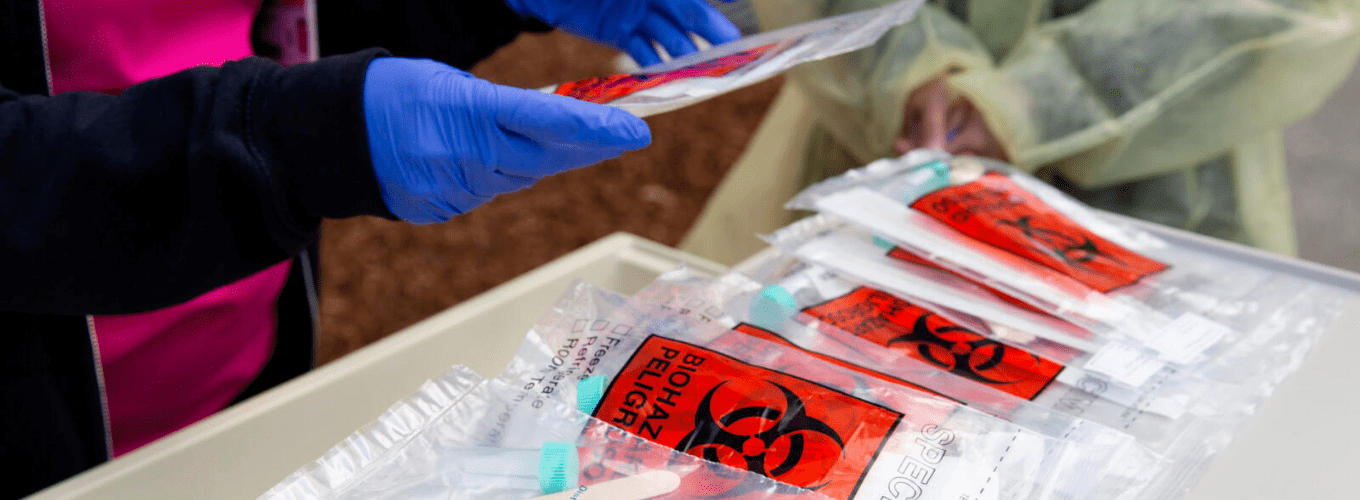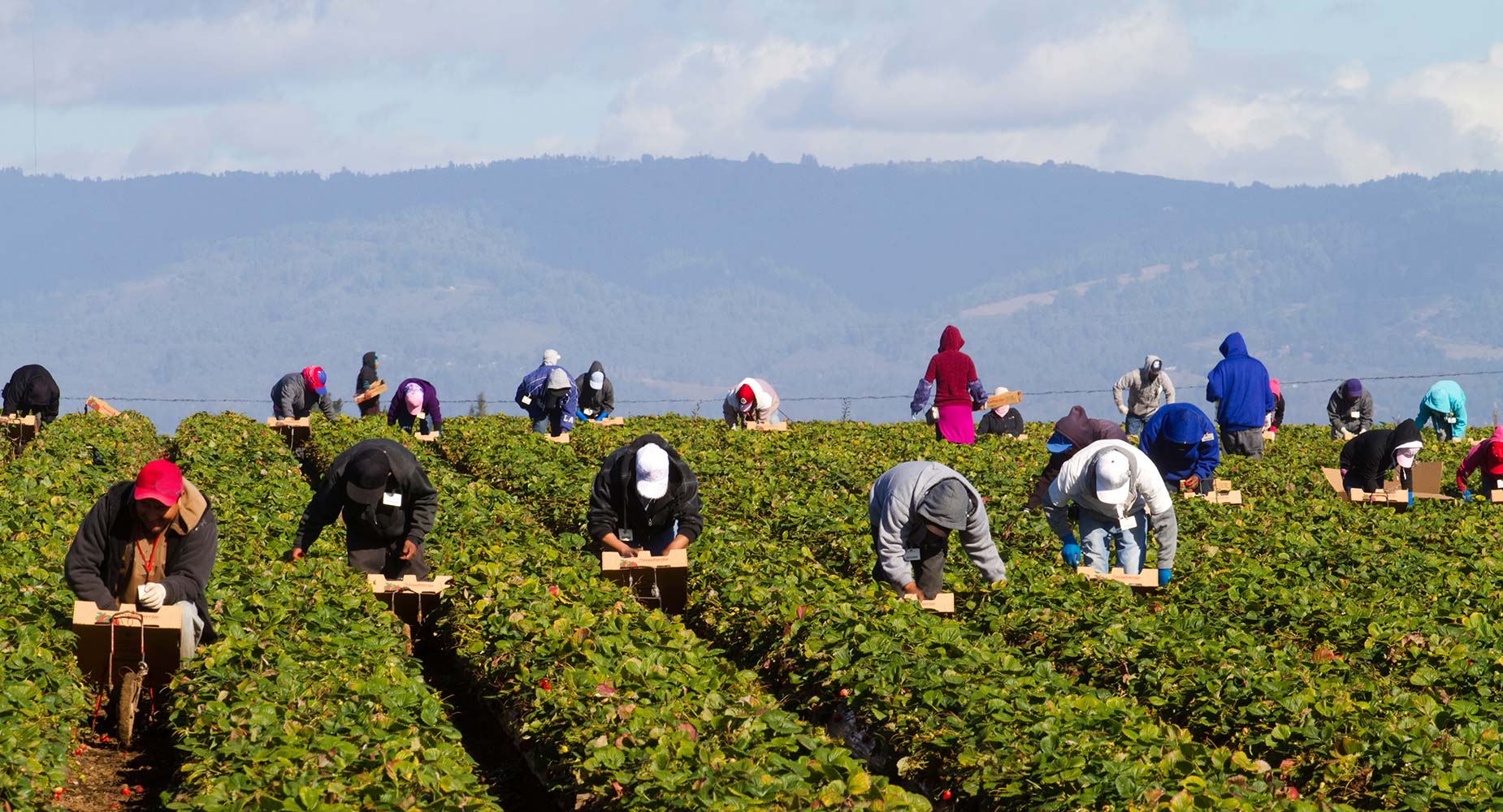
Testing of symptomatic faculty, staff and students at UC Berkeley’s health center helps researchers track the coronavirus variants in the community. The regular sequencing of viral genomes from positive swabs turned up the first cases of the more transmissible variant first discovered in the United Kingdom, plus numerous cases of a potentially more transmissible California variant.
“It is unfortunately no surprise that this and other variants are being detected locally, given the extent of viral spread happening currently regionally, nationally and internationally,” said Dr. Anna Harte, Medical Director at University Health Services (UHS). “With more viruses circulating, emerging strains that are more transmissible will tend to dominate. What is more concerning is whether they may become resistant to our vaccines, and how lethal they are. The more efficiently we can contain the spread, the better chance we have of nipping this in the bud. It is absolutely critical that people be even more careful than they have been before during this pandemic so that we can vaccinate and protect those who are most at risk of becoming seriously ill.”
The campus is now experiencing a spike in the number of students with COVID-19, which forced administrators to direct all students currently living in campus dorms to self-sequester to help contain the spread. Students should stay in their rooms as much as possible and wear face coverings whenever in common areas of their dormitory floor.
The two UC Berkeley cases of the B.1.1.7 variant were discovered by a team of researchers who are sequencing virus-positive samples obtained during symptomatic and asymptomatic testing of all onsite students, faculty and staff. The infected students reported symptoms and were tested for the coronavirus on Jan. 19 and 21, respectively. Contact tracing by UHS staff revealed that both had recently arrived in the U.S. from abroad, and were connected.
The most recent sequencing also turned up additional details about the local viral variants.
In one set of 95 viral genomes recently sequenced, all collected between Nov. 4, 2020, and Jan. 21, 2021, nearly one-quarter — 26% — were a relatively new California variant called CAL.20C that is sweeping through the state. As of Feb. 2, California had reported more than 1,000 cases of this variant. In the Los Angeles area, the variant makes up between one-quarter and one-third of all COVID-19 cases. Characteristics of this new variant are still unknown, but there is some concern that it, too, could be more infectious.
In addition, one person who tested positive for CAL.20C in January of this year had previously been infected with a different variant of SARS-CoV-2, in July 2020.

Stacia Wyman leads SARS-CoV-2 genome sequencing efforts in the IGI, which are key to tracking the spread of potentially more infectious variants. (UC Berkeley photo by Brittany Hosea-Small)
Such reinfections have been reported around the world, though they are still rare, said Stacia Wyman, a specialist in medical genomics who leads the sequencing effort within UC Berkeley’s Innovative Genomics Institute.
“It is really significant that the CAL.20C variant that seems to be taking over at least a third of the cases was able to reinfect someone,” Wyman said. “That person’s viral load was very high.”
Viral surveillance
Since last March, when IGI researchers first mobilized to deal with the COVID-19 pandemic, Wyman and colleague Liana Lareau, Assistant Professor of Bioengineering, have carved out a crucial niche: monitoring the mutations in the SARS-CoV-2 virus in the local community. Once IGI researchers began testing campus and community samples in April, they started sequencing the virus in every swab sample that showed a high enough viral load.
To date, she and her team have reconstructed the sequences of 750 viral samples, all of which have been uploaded to the national database that tracks the spread of variants. The IGI group is part of the Centers for Disease Control and Prevention’s Sequencing for Public Health Emergency Response, Epidemiology and Surveillance (SPHERES) program, and also collaborates with a UC San Francisco sequencing effort led by Charles Chiu, who first identified the CAL.20C variant in early January.

An evolutionary tree of SARS-CoV-2 genomes sequenced around the world since the COVID-19 pandemic began, with 95 new genomes recently sequenced by the IGI in red. The blue square encloses the cluster of recent cases caused by the California variant, CAL.20C. One person was reinfected by the California variant, as indicated by the arrows pointing to that person’s first and second infections. Distance from the center indicates the number of mutations in the virus since it first appeared in China. (Graphic courtesy of Stacia Wyman)
As part of national efforts to track emerging variants, Wyman’s team is currently implementing a rapid pipeline with a two-week turnaround from testing to entry in the public database. Positive samples for the prior week are compiled onto a 96-well plate, a two-day library preparation for sequencing is performed, the samples are sequenced on an Illumina MiSeq, which takes approximately three days, and then analyzed and made public within two days.
The faster turnaround is particularly critical for tracking new variants, she said, in contrast to an average of 97 days for the U.S. in 2020. She is also doubling the lab’s weekly capacity during the current campus outbreak in order to sequence nearly every positive case discovered on campus.
Once the viral genomes are constructed for each sample, she plots all of the viral mutations on a chart, representing an evolutionary tree that shows how the campus viruses have changed over time and new variants have arrived. Transmission from one person to another often involves at least one new mutation, allowing her to track variants as infections move through the population.
Last June, for example, when an outbreak was traced to an off-campus party, she documented the same three telltale mutations in 52 people, making the party a true super spreader event.
“I sequenced all the genomes we had assembled up to that point, and 52 of them were the same, which means that one person gave 52 people COVID at one party,” she said. “Then we had seven more cases that were one mutation away from that genome, so we knew that it came from that outbreak.”
The good news, however, was that this variant essentially disappeared. She credits prompt contact tracing by UHS and the campus’s education efforts, including the Safe Campus Initiative testing that was going on at that time.
“Because they were engaging people and educating them, we had that big spike but then it was shut right down, and we didn’t see any more cases, which is fantastic and a testament to the campus’s response in that case,” she said.
Wyman and her team are now preparing to sequence many of the new cases that have popped up on campus, to see whether the variant that originated in the UK or the CAL.20C variant — or perhaps others — are spreading more widely. There is no evidence at this time that the new variant is linked to the recent campus surge in COVID-19 cases. The variant that originated in California may also be more transmissible, because of its quick dominance over other variants, but tests of this hypothesis have not yet been completed.
In the meantime, Wyman says she is being extra cautious so as not to contract any of the new variants herself.
“People need to be careful. There are more variants out there and there are a lot more people with COVID-19 out there,” she said. “It is really important now, when we are trying to get as many people vaccinated as possible, that we slow down the virus as much as we can and give the vaccine a chance to work.”




